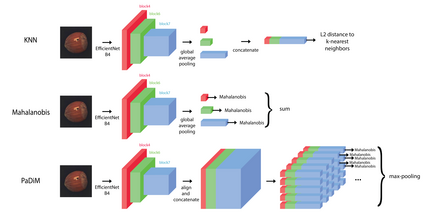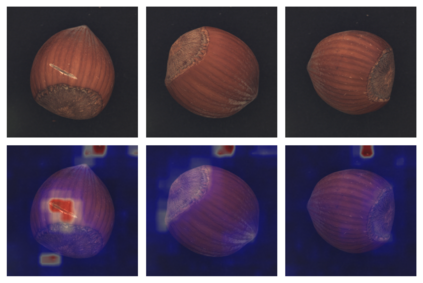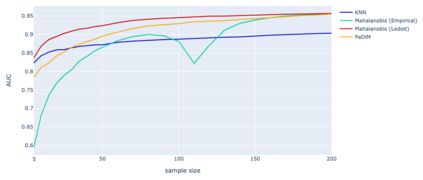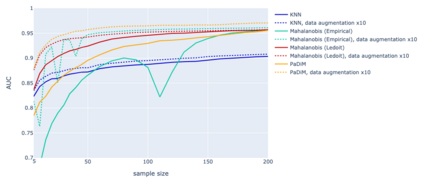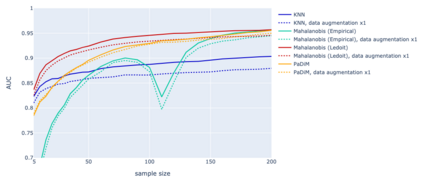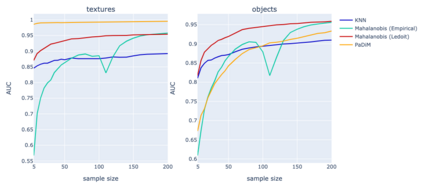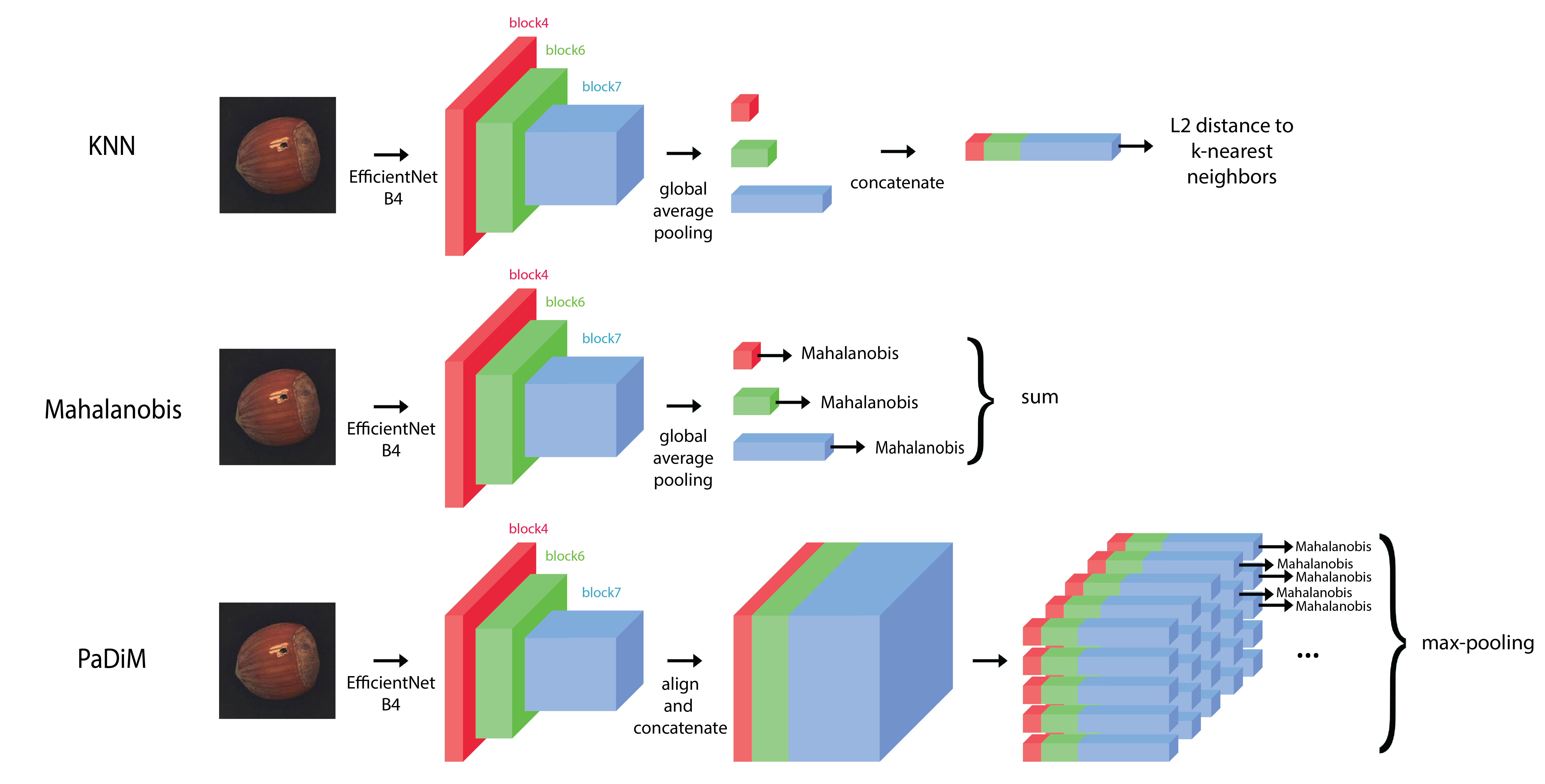The use of deep features coming from pre-trained neural networks for unsupervised anomaly detection purposes has recently gathered momentum in the computer vision field. In particular, industrial inspection applications can take advantage of such features, as demonstrated by the multiple successes of related methods on the MVTec Anomaly Detection (MVTec AD) dataset. These methods make use of neural networks pre-trained on auxiliary classification tasks such as ImageNet. However, to our knowledge, no comparative study of robustness to the low data regimes between these approaches has been conducted yet. For quality inspection applications, the handling of limited sample sizes may be crucial as large quantities of images are not available for small series. In this work, we aim to compare three approaches based on deep pre-trained features when varying the quantity of available data in MVTec AD: KNN, Mahalanobis, and PaDiM. We show that although these methods are mostly robust to small sample sizes, they still can benefit greatly from using data augmentation in the original image space, which allows to deal with very small production runs.
翻译:最近,为不受监督的异常探测目的,对来自受过训练的神经网络的深层特征的使用在计算机视觉领域已形成势头,特别是工业视察应用可以利用这些特征,例如MVTec异常探测(MVTec Anocly Set (MVTec AdAD))数据集相关方法的多重成功。这些方法利用了事先经过图像网络等辅助分类任务培训的神经网络。然而,据我们所知,尚未对这些方法之间的低数据体系的稳健性进行比较研究。对于质量检查应用而言,处理有限的样本规模可能是至关重要的,因为没有小系列的大量图像。在这项工作中,我们的目标是在MVTec AD(KNN、Mahalanobis和PDIM)现有数据数量不尽相同的情况下,比较基于深层预先训练特征的三种方法:KNNN、Mahalanobis和PDIM。我们表明,虽然这些方法大多对小样本规模而言,但它们仍可从原始图像空间的数据增强中受益,因为可以处理非常小的生产量。

